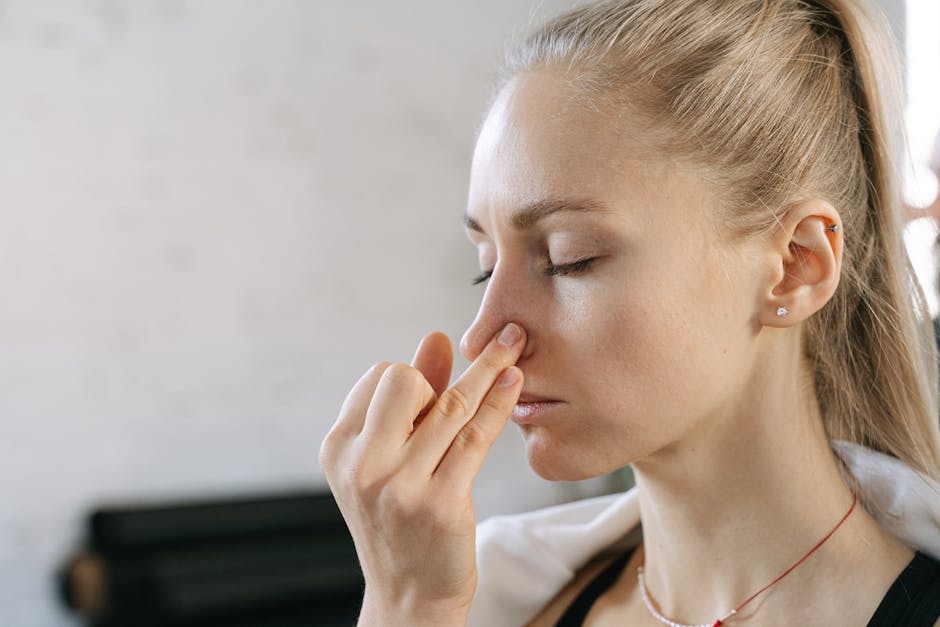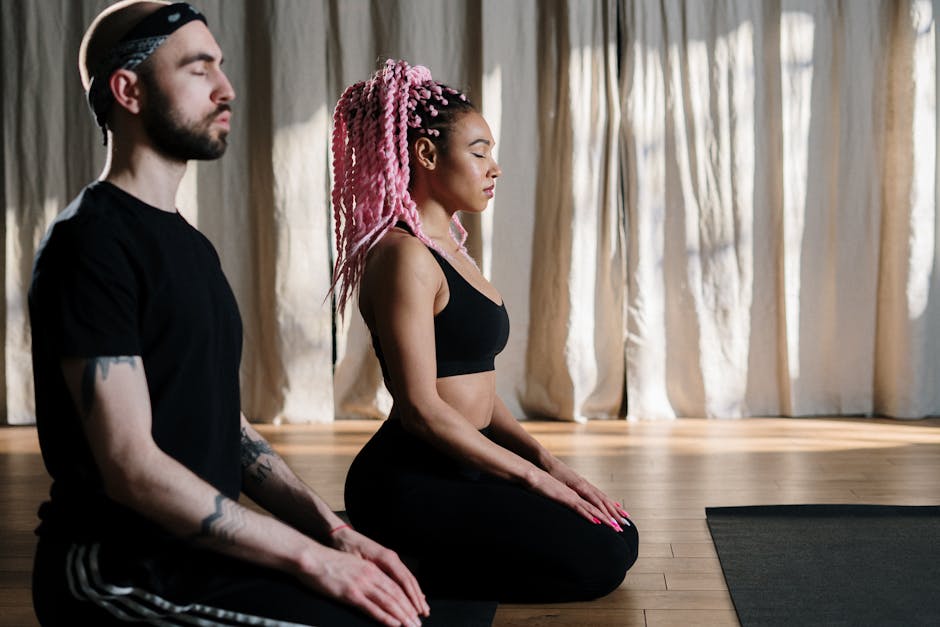Discover the Science of Breath: Transform Your Mind and Body Today
Have you ever paused to think about the act of breathing? It seems simple yet profound, isn’t it? Breath is essential to life, yet the way we breathe can greatly affect our mental and physical well-being. In yoga, this concept flourishes through a practice called Pranayama, which literally means "control of breath." As we delve into the science behind breath and its transformative effects, you might just discover how pranayama can reshape your yoga practice—and perhaps your life.
Understanding Pranayama: More than Just Breathing

The ancient practice of Pranayama is more than simply inhaling and exhaling. It's a sophisticated technique rooted deeply in yoga and Ayurveda that encompasses various styles and intentions. Practicing pranayama helps you harness your life force or "prana," leading to enhanced physical vitality, mental clarity, and emotional balance. In scientific terms, breathing influences our autonomic nervous system, affecting everything from anxiety levels to heart rate.
Think of your breath as your own personal filter to suppress or amplify stress. Studies have shown that controlled breathing can trigger the parasympathetic nervous system, which is responsible for relaxation. Whether you're overwhelmed at work or navigating life’s daily hurdles, pranayama may hold the key to feeling grounded once again.
The Science Behind Breath Control

Studies, including those published by Harvard Health Publishing, illustrate how breath control can profoundly affect mental and physical health. For instance, practicing slow, deliberate breaths can lower anxiety and improve concentration. When we inhale deeply, it increases blood flow and oxygen levels in the brain, stimulating neurotransmitters that promote joy and well-being, like dopamine and serotonin.
Additionally, research has demonstrated that diaphragmatic breathing—often employed in pranayama—can lead to physiological changes, such as lowering blood pressure and enhancing digestion. This intricate dance of body mechanics highlights why mastering your breath can lead to a better, healthier lifestyle.
Why Pranayama is Essential in Yoga Practice

Incorporating pranayama into your yoga practice brings a layer of profound transformation. The primary aim of yoga is not only physical fitness but the cultivation of mental clarity and emotional stability. Pranayama acts as a bridge between the body and mind, aligning them through breath.
As you glide through various asanas, pairing them with purposeful breathing cultivates awareness. Consider a yoga practice where you're flowing through a sun salutation: just when you're about to feel fatigue settle in, a focused inhale can act as a fresh wave of energy, while a calming exhale helps maintain serene composure.
Different Types of Pranayama Techniques

Several types of pranayama techniques exist, each with unique benefits and purposes. Here are a few popular methods, along with their impacts:
1. Nadi Shodhana (Alternate Nostril Breathing)

A balancing practice that calms the mind and promotes emotional stability, Nadi Shodhana aids in harmonizing the left and right hemispheres of the brain. This technique encourages deep introspection, making it an ideal choice for meditation.
2. Ujjayi Breathing (Victorious Breath)

This technique involves a slight constriction in the throat while inhaling and exhaling, creating a soft whispering sound. Ujjayi breath is often used in Vinyasa and Ashtanga yoga to help practitioners maintain focus and stamina in their practice.
3. Kapalabhati (Skull Shining Breath)

A more energizing practice, Kapalabhati involves forceful exhalations followed by passive inhalations. This technique can invigorate the body and clear the mind, making it ideal for morning yoga sessions.
4. Bhramari (Bee Breath)

Emulating the sound of a humming bee, this technique can calm anxiety and improve concentration. Practitioners often find it useful for creating a peaceful atmosphere before meditation or deep relaxation.
By engaging in such techniques, practitioners can promote overall wellness, balance emotions, and build resilience against stressors in daily life.
The Psychological Benefits of Pranayama

Beyond its physiological benefits, pranayama has profound psychological advantages. Have you ever noticed how often we breathe shallowly when stressed? This automatic response can create a loop that perpetuates anxiety.
Pranayama interrupts this cycle. By consciously focusing on your breath, you divert attention away from internal chatter and external noise, redirecting your mind to a state of calmness. This is particularly beneficial for individuals grappling with anxiety disorders. Yoga therapy, supplemented with pranayama, has been linked to significant reductions in anxiety levels, as noted in sessions supported by the American Psychological Association.
Moreover, engaging with your breath creates mindfulness. This awareness allows you to embrace the present moment, reducing rumination over the past or worries about the future. Mindfulness is a practice that many mental health professionals recommend as a natural aid for depression and anxiety.
The Role of Breath in Meditation

Meditation and pranayama go hand in hand. In fact, many meditation practices begin with a focus on the breath. As you delve deeper into meditation, the rhythm of your breaths becomes a focal point, helping to bring about concentration and a sense of inner peace.
Just as you can alter your mental state through breath, meditation can fundamentally reshape your perception of reality, enhancing overall emotional health and boosting resilience. The synergistic relationship between breath control and meditation can provide profound insights and experiences that enrich your yoga journey.
Integrating Pranayama into Your Yoga Routine

How can you incorporate pranayama into your existing yoga practice? Here are some practical steps:
1. Start Your Classes with Breath Work
Begin with a few minutes of pranayama before diving into asanas. This sets an intention and prepares your body and mind for the practice.
2. Connect Breath with Movement
Practice pairing your inhalations and exhalations with specific movements. For example, synchronizing your breath with a forward bend can enhance your practice's flow.
3. Use Breath Techniques for Grounding
If you encounter a challenging pose, utilize pranayama as a tool for grounding. Slow, focused breathing can help alleviate anxiety and restore balance.
4. Conclude with a Breath-Based Meditation
Incorporate pranayama at the end of your yoga practice to facilitate a smooth transition into savasana (the final relaxation pose). A few minutes of calm breathing can greatly impact your relaxation experience.
Additionally, be sure to check out resources from credible yoga organizations and trainers to expand your knowledge about effective techniques that can enhance your practice.
Evidence-Based Research Supporting Pranayama Benefits
As the ancient practice of pranayama gains momentum in scientific circles, various studies have begun to validate its benefits. Research published in journals such as the Journal of Clinical Psychology demonstrates that pranayama can lead to emotional regulation and reduced stress levels.
Moreover, a comprehensive study highlighted that individuals participating in pranayama workshops exhibited significantly lower cortisol levels—stress hormones widely associated with chronic stress—after regular practice. Such evidence emphasizes how rooted pranayama is in both ancient wisdom and modern science.
Final Thoughts: Your Journey to Mindfulness and Wellness
Embracing the art of pranayama can transform your yoga practice and overall lifestyle. Whether you're a seasoned yogi or just starting, understanding and utilizing your breath can take you on a journey of self-discovery and tranquility. The next time you roll out your yoga mat, remember, your breath is not merely a means to an end—it's a powerful tool that can help you navigate life with clarity and composure.
As you explore the depths of your breath, you may uncover new pathways to embrace mindfulness, reduce stress, and cultivate a more harmonious relationship with yourself and the world around you. So, take a deep breath, and embark on this transformative journey today.


